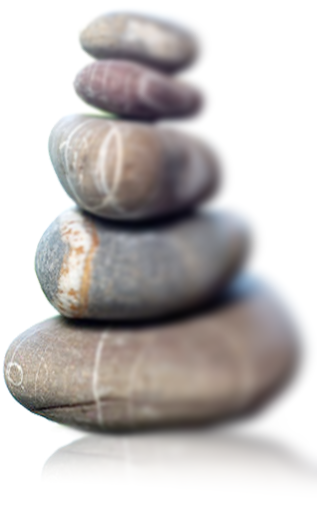
The
Alexander Clinic
The
Willows Clinic
Holistic & Caring Osteopathic Healthcare
Lower back
-
Lumbar Spine Flexion
In a standing position keep your legs straight and just hang down by gravity and relax. Then take hold behind your knees and pull your head towards your knees (note that stretching towards your feet focuses the stretch more into your hamstrings). Increase the stretch by breathing in and relaxing on the out breath, allowing muscular relaxation to do the work, not muscular effort. To avoid injury, keep the stretch at a mild to moderate level of intensity. If you experience pain at any time, stop the exercise.
Lumbar Spine Flexion
Lying on your back, grasp your knees and pull them towards your chest. Increase the stretch by breathing in and relaxing on the out breath, allowing muscular relaxation to do the work, not muscular effort. To avoid injury, keep the stretch at a mild to moderate level of intensity. If you experience pain at any time, stop the exercise.
Lumbar Spine Flexion
In a seated position with your legs straight out in front of you, reach forward and grasp your ankles (or as far down your calves as is comfortable) and relax. Then breathe in and then on the out breath pull your head toward your knees (note that stretching towards your feet focuses the stretch more into your hamstrings). Repeat this once again. To avoid injury, keep the stretch at a mild to moderate level of intensity. If you experience pain at any time, stop the exercise.
-
Extension- The Cobra
Lying on your front, go up onto your elbows and relax as much as possible using breathing. Hold this for approximately 10 seconds, then relax- repeat 3 times. To increase the stretch, go up onto your hands. To avoid injury, keep the stretch at a mild to moderate level of intensity. If you experience pain at any time, stop the exercise.
-
Flexion/Extension (Cat) Stretch
On your hands and knees, bend your head downwards and rotate your pelvis backwards (i.e. tuck your tail bone under). Hold a gentle stretch for about 10 seconds, then arch your whole back and look up to the ceiling and hold for 10 seconds. Repeat this process 4-6 times. To avoid injury, keep the stretch at a mild to moderate level of intensity. If you experience pain at any time, stop the exercise.
-
Lumbar Spine Side bending
In a standing position, hang down to one side and just relax, letting gravity do the work. Increase the stretch by breathing in and relaxing on the out breath, allowing gravity to do the work, not muscular effort. Perform this once more i.e. do an initial stretch and 2 further stretches using your breathing. Do the same thing on the other side if necessary. To avoid injury, keep the stretch at a mild to moderate level of intensity. If you experience pain at any time, stop the exercise.
-
Diagonal Stretch (QL)
In a standing position perform a diagonal left side bend that is one third of the way round from being a direct left side bend, and relax into the stretch. Allow all your weight to go onto your left foot and extend your right leg to the right and slightly behind you and stretch your right hand forwards and outwards to the left. To increase the stretch, breath in, and then on the out breath lift your right shoulder- tinkering around with the exact angle of the stretch (either towards flexion or side bend) can also help you to find the ‘sweet spot’. Perform this once more i.e. do an initial stretch and 2 further stretches using your breathing. Do the same thing on the other side if necessary. To avoid injury, keep the stretch at a mild to moderate level of intensity. If you experience pain at any time, stop the exercise.
-
Lumbar Spine Rotation
Laying on your left side, move your right leg across your body, maybe off the side of your bed, to cause a twist in your back. To counterbalance and cause a rotation in your upper back, stretch your right arm out diagonally above your head. Increase the stretch by breathing in and relaxing on the out breath, allowing gravity to do the work, not muscular effort. Perform one further stretch with breathing. If more intensity is required, place your left hand on your right knee and push- this should have the dual effect of pushing your right leg further off the bed and to push your shoulders further round to the left. Use breathing as before. Vice versa to stretch the other side. To avoid injury, keep the stretch at a mild to moderate level of intensity. If you experience pain at any time, stop the exercise.
Lumbar Spine Rotation
Sitting on a chair, twist round in order that you can hold on to the back- it will probably be necessary to allow your knees to swivel round in order to do this. Then pull yourself round with your arms to produce a mild stretch and look over your shoulder to make it a full-body stretch, for approximately 10 seconds. Increase the stretch by breathing in and relaxing on the out breath for a further 10 seconds. Repeat this procedure one further time and then twist the other way. To avoid injury, keep the stretch at a mild to moderate level of intensity. If you experience pain at any time, stop the exercise.
Please check out our many Google reviews for customer feedback
Paul A. Costin
BSc (Hons) Ost Med, DO,
ND GOsC Registered Osteopath & Naturopath
Phone: 07973 852874874
The Alexander Clinic
All rights reserved